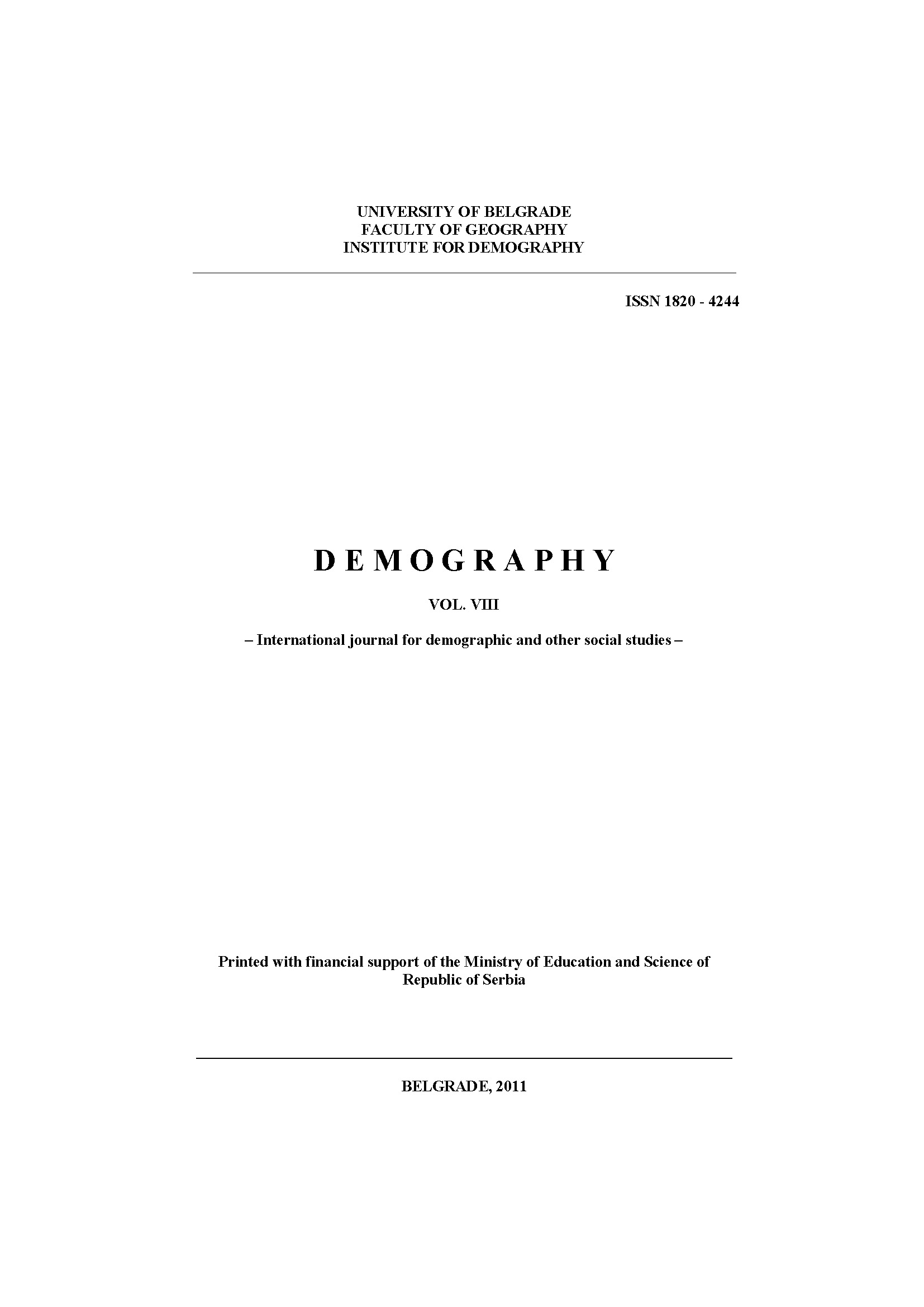Становништво Суботице према вероисповести и матерњем језику 1869–1910.
Population of Subotica by Religion and Native Language 1869–1910
Author(s): Branko ĆupurdijaSubject(s): Social Sciences, Geography, Regional studies, Human Geography, Social differentiation, Family and social welfare, Demography and human biology, Ethnic Minorities Studies
Published by: Географски факултет, Универзитет у Београду
Keywords: Subotica;assimilation;Austro-Hungarian;society;state;
Summary/Abstract: The subject of this paper is a population of Subotica, during the Austro-Hungarian monarchy. The attention is given to the number of inhabitants and their declaration of religion and language, based on which indirectly we can judge of their nationality. Population increased from 56,323 to 94,610 inhabitants or for 38,287 inhabitants (index 167.98.) in period 1869-1910. In the urban area of Subotica in 1910th lived 46,762, and in 19 villages outside the city territory, (without Bajmok Cantavir), lived 46,470, which is a total of 93,232 residents, but without military personnel. During the 42 years period considering the religion structure, Roman Catholics counting between 90.31% and 92.64%,and were most numerous religion group. Only between 3.07% 4.34%, of Orthodox and 2.36% and 3.74%,of Israelites and reform, between 0.34% and 1.50% of the population lived in Subotica. All other religious communities, Greek Catholics, UNITAR, evangelicals and others are individually less than 1% in the share of total population. Persons who speaks hungarian language declared between 49.00% and 58.75% in the share of total population, Bunjevac population (Croatian-Serbian, Serbian and other languages) belongs between 35.29% and 40.34% in the share of total population, Serbian language (belonging to the Orthodox faith) between 3.27% and 3.75% in the share of total population, for the German language between 2.02% and 2.61% in the share of total population, and all other native languages, Slovak, Romanian, Ruthenian, Croatian, Slovenian and other languages belong to the less than 1% in the share of total population. This paper explains the historical and social processes that have influenced the declaration of the population, including the process of assimilation. These issues are discussed from the perspective of the present Subotica municipality in which there are 19 settlements. This means that the researches consider also settlements Bajmok and Čantavir even though they didn’t belong to a free royal town of Subotica according to census data in Austria-Hungary monarchy. This is done for two reasons: to compare these settlements with Subotica in the period 1869-1910. and in case of subsequent comparisons with today's situation.
Journal: Demografija
- Issue Year: 2011
- Issue No: 8
- Page Range: 63-99
- Page Count: 37
- Language: Serbian

